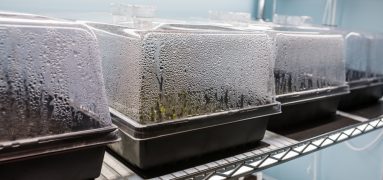How To Reduce Your Food Waste

Why and how addressing food waste is important
Happy National Stop Food Waste Day!
April 30th is Stop Food Waste Day, which serves as a great opportunity to assess your food usage.
Food waste may not always be at the top of your mind, but when you pay attention to how much you throw away each day, you might be surprised! Did you know that over 1/3 of US-produced food is wasted? That’s 145 billion meals worth of food in the landfill!
Why is reducing food waste important?
Growers and farmers know exactly how much time, effort, and resources go into each piece of food we eat. When you waste spoiled or uneaten food, you’re also wasting the energy, water, soil, fertilizers, and manpower that it took to grow that food. Conserving our resources is essential, so it’s important to be mindful about how much food you’re buying versus how much you’re wasting.
Additionally, when food ends up in landfills, it creates greenhouse gases that are harmful to the environment. Food waste alone produces 8% of greenhouse gas emissions.
Last but not least, throwing away food is the same as throwing away your money! Buying food, letting it go bad, and then throwing it away is wasteful to the planet, to growers, and to your wallet.
How do I reduce my food waste?
There are a few easy ways to reduce the amount of food you waste. By making these small changes, you could save a lot of food from becoming garbage.
- Give ugly fruit some love
Just because it’s ugly doesn’t mean it’s not good to eat! Although spots and blemishes may make produce unsightly, not every meal has to be picture-perfect. A piece of “ugly” produce is just as edible and nutrient-rich as the rest. Imperfect produce can still be sold and utilized as normal.
- Learn proper storage techniques
Properly storing your leftovers prevents them from spoiling and saves you from having to throw it away. Always refrigerate leftovers and perishables as soon as possible, and store them in sealed containers.
Remember that the most dangerous temperature to leave leftovers at is 40-140 degrees Fahrenheit, so either keep food hot once it’s done cooking or put it right in the fridge.
- Know your dates: Sell by, best by, use by
The dates on your food packaging are there to help you, not scare you! If the package says “sell by,” that indicates the date that stores should take the product off of the shelves by—not the date it goes bad.
If the package says “best by,” it indicates the date that the food is at peak quality. After the best by date, the food will decline in quality, although it will still be edible.
If the package says “use by,” it indicates the date that you should eat the food by. After that date, the food should be thrown out—or composted!
- Composting
If your food has already gone bad, there’s still time to save it from going to waste. Composting is a great way to recycle old food that can’t be eaten. Compost your food scraps and use it as fertilizer in your garden to give back to the earth.
Simply being conscious of how much food you’re eating versus how much you’re wasting is a great way to get started on reducing your food waste. Slowly adjusting how much produce you buy, when you use it, and how you store it can make a big difference.
Temperature and humidity have a lot to do with food freshness—and our TCC growers and technicians are experts in both! Contact us to discuss HVAC and grow controls to keep your produce as fresh as high-quality as possible.



